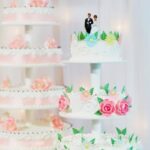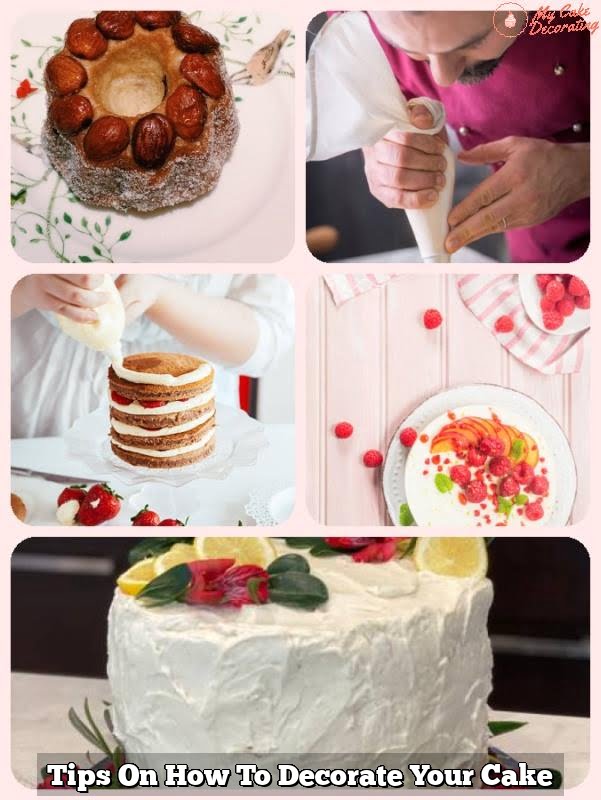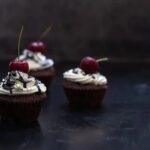Decorating a cake goes beyond adding a beautiful touch to a delicious dessert. It brings life and excitement to any occasion or celebration, serving as a visually appealing centerpiece that leaves a lasting impression. If you’ve ever marveled at exquisitely decorated cakes and wondered how to create your own stunning designs, then this article is for you.
In this comprehensive guide on cake decoration, we will explore the art form’s significance, necessary tools and equipment, selecting the right cake base, basic techniques, creative ideas for beginners, intermediate tips and tricks, expert-level inspiration, troubleshooting challenges, presentation and serving tips. So unleash your creativity and get ready to dive into the world of cake decoration.
A beautifully decorated cake has the power to transform any ordinary gathering into an extraordinary event. Whether it’s a birthday party or a wedding reception, a well-crafted cake draws attention and sets the mood for the entire occasion. The carefully placed details can capture themes, convey emotions, and make guests feel truly special.
To embark on your journey as a cake decorator, you’ll need some essential tools and equipment at your disposal. Piping bags for intricate designs or writing messages with precision; spatulas for smooth icing application; various decorating tips for creating different shapes and textures-these are just a few examples of what you’ll require in your arsenal for successful cake decoration.
When it comes to selecting the right cake for decoration, choosing the appropriate base is crucial. Butter cakes offer stability and are perfect for intricate designs; sponge cakes provide lightness that complements delicate decorations; chiffon cakes possess a fluffy texture that can support more elaborate styles. Understanding which type of cake works best for various designs ensures that your creations not only look fantastic but also taste delightful.
Cake decoration is an art form that allows individuals to channel their creativity in unique ways. From simple buttercream flowers to elegant fondant designs or even gravity-defying structures-the possibilities are endless. By following step-by-step instructions or video tutorials accompanied by high-quality visuals, beginners can find joy and fulfillment in their cake decoration journey. So get your tools ready, put on your apron, and let’s dive into the wonderful world of cake decoration.
Necessary Tools and Equipment for Cake Decoration
Decorating a cake requires the use of specific tools and equipment to achieve professional-looking results. Whether you are a beginner or an experienced decorator, having the right tools is essential for creating beautiful designs on your cakes. Here is a comprehensive list of necessary tools and equipment for cake decoration:
Piping Bags and Tips
One of the most important tools in cake decoration is the piping bag. Piping bags come in different sizes and materials, such as disposable plastic or reusable cloth. They are used to pipe frosting, buttercream, or royal icing onto the cake in various designs. Make sure to have a variety of piping tips with different shapes and sizes to create different patterns, borders, flowers, and text.
Spatulas
Another essential tool is a set of spatulas. Offset spatulas are great for spreading icing on the cake’s surface smoothly. They also help in achieving sharp edges. A straight spatula can be used for applying buttercream or ganache on flat surfaces or for smoothing the sides of round cakes.
Icing Smoothers
To achieve flawless finishes on your cakes, icing smoothers are crucial. These tools help eliminate any unevenness or air bubbles in the frosting or fondant applied to the cake’s surface. Use them to create clean and polished finishes.
Palette Knife
A palette knife is useful for creating textured finishes or adding decorative touches like marbling effects on the cake’s surface. It can also be used for lifting delicate decorations without damaging them.
Turntable
A turntable makes it easier to work on all sides of the cake without constantly moving around it. It allows for smoother icing application and helps in achieving even designs throughout the cake’s surface.
Decorating Brushes
Decorating brushes are necessary when working with color dusts or applying edible paint to the cake. These brushes come in different sizes to help achieve detailed and intricate designs on your cakes.
Overall, having the right tools and equipment will not only make your cake decorating process more efficient but also ensure that you achieve professional-looking results. Invest in high-quality tools that are durable, easy to use, and maintain, as they will greatly enhance your cake decorating experience.
Choosing the Right Cake for Decoration
When it comes to cake decoration, one of the most important factors to consider is selecting the right cake base. The type of cake you choose will greatly impact your ability to achieve your desired decoration style. Here are some tips to help you choose the perfect cake for your next decorating project:
- Butter Cakes: Butter cakes are a popular choice for decorating because of their dense and sturdy texture. They hold up well to intricate designs and can be easily carved into different shapes. If you’re planning on covering your cake with fondant or working with sculpting techniques, a butter cake would be an excellent choice.
- Sponge Cakes: Sponge cakes have a light and airy texture, making them ideal for layering and filling with creams or fruit fillings. They also absorb syrups well, which adds extra moisture and flavor to your cake. Sponge cakes work best with simple decorations that don’t require too much weight or detail.
- Chiffon Cakes: Chiffon cakes are known for their moist and fluffy texture, making them a versatile option for any decorating style. They can be layered, filled, and frosted without losing their softness. Chiffon cakes are especially great for incorporating fresh fruits into your design.
Once you have chosen the right cake base, it’s essential to ensure that it is properly leveled before moving on to the decoration process. This will help create an even surface for your design and prevent any leaning or toppling issues later on.
Basic Techniques for Cake Decoration
Cake decoration is an art that requires basic techniques to achieve a beautiful and professional-looking result. Before diving into more advanced designs, it is crucial to master the fundamental skills of cake decoration. This section will demonstrate some basic techniques that every beginner should learn.
- Icing Application: The first step in cake decoration is to apply a layer of icing on the cake’s surface. To achieve a smooth and even finish, start by leveling the top of the cake using a serrated knife or a cake leveler. Then, crumb coat the cake by applying a thin layer of icing to seal in any loose crumbs.
Once the crumb coat has set, apply another layer of icing for the final finish. Use an offset spatula or a bench scraper to spread the icing evenly on the sides and top of the cake. - Piping: Piping is a versatile technique that allows you to create decorative patterns and designs using different types of piping tips and bags filled with icing or buttercream. To begin, fill your piping bag with desired frosting or icing and attach a piping tip of your choice.
Hold the bag at a 45-degree angle and apply steady pressure while gently squeezing out the icing onto the cake surface. Practice different techniques like rosettes, shells, dots, or borders to add texture and dimension to your cakes. - Fondant Application: Fondant is a popular choice for creating smooth and flawless cake finishes as well as intricate decorations such as flowers or figures. Start by kneading your fondant until it becomes pliable and roll it out on a clean surface dusted with powdered sugar or cornstarch to prevent sticking.
Gently lift the rolled fondant over your rolling pin and place it onto the center of your iced cake. Smooth out any air bubbles or wrinkles by gently patting down the fondant with your hands or using a fondant smoother.
By mastering these basic techniques, you can create beautifully decorated cakes that will impress your family and friends. Remember to practice and experiment with different designs to develop your own unique cake decoration style. With time, patience, and creativity, you will soon be able to move on to more advanced techniques and create stunning works of art with your cakes.
Creative Cake Decor Ideas for Beginners
Decorating a cake can be a fun and creative way to add your personal touch to any celebration. If you’re a beginner looking to learn some simple yet impressive cake decorating ideas, we’ve got you covered. Here are some creative cake decor ideas that are perfect for beginners:
- Buttercream Flowers: Buttercream flowers are a beautiful and easy way to decorate a cake. You can create roses, daisies, and other floral designs using different piping tips and techniques. Start by piping a base of buttercream frosting onto your cake, then use smaller tips to pipe petals and leaves in various colors.
- Chocolate Drizzles: For a quick and delicious decoration, try chocolate drizzles. Melt some chocolate in a microwave-safe bowl and drizzle it over the top of your cake using a spoon or piping bag. You can create patterns or simply let the chocolate flow naturally for an elegant finish.
- Simple Fondant Designs: Fondant is a versatile medium that can be shaped and molded into almost anything. Roll out fondant into thin sheets, then cut out shapes using cookie cutters or freehand cutting tools. Decorate your cake with fondant flowers, bows, or any other design of your choice.
| Idea | Techniques | Materials |
|---|---|---|
| Buttercream Flowers | Piping with different tips | Piping bags, various icing colors |
| Chocolate Drizzles | Drizzling technique | Melted chocolate, spoon or piping bag |
| Simple Fondant Designs | Shaping and molding fondant | Fondant, rolling pin, cookie cutters |
These cake decor ideas are perfect for beginners because they require minimal equipment and can easily be mastered with a little practice. Remember to have fun and let your creativity shine through as you decorate your cakes.
Intermediate Cake Decorating Tips and Tricks
Once you have mastered the basic techniques of cake decoration, it’s time to take your skills to the next level. In this section, we will provide you with some intermediate cake decorating tips and tricks that will help you create more intricate and impressive designs.
One technique that can greatly enhance your cake decoration is stenciling. Stencils are a versatile tool that allows you to easily create patterns and designs on your cake. Simply place the stencil over the cake and use a sifter or airbrush to apply color or powdered sugar through the stencil onto the cake surface. This technique can produce beautiful and professional-looking designs with minimal effort.
Another advanced technique in cake decorating is piping intricate designs. Using different piping tips, you can create delicate lace patterns, intricate borders, or even write personalized messages on your cakes. Practice with different piping bags and various tips to see what works best for you, and don’t be afraid to experiment with different techniques such as pressure control and piping consistency.
Working with modeling chocolate or gum paste is another skill that will elevate your cake decoration game. These edible mediums allow for sculpting detailed figures, flowers, or other decorative elements that can add a wow factor to your cakes. Learn how to properly handle and shape these materials, as well as how to attach them securely to your cakes.
In addition to these tips and tricks, continue practicing the foundational techniques of icing application, leveling, crumb coating, and smoothing the cake surface before moving on to more advanced decorations. Remember that patience and practice are key when it comes to mastering any new skill in cake decorating.
| Technique | Description |
|---|---|
| Stenciling | Use stencils to create patterns and designs on cakes by applying color or powdered sugar through the stencil onto the cake surface. |
| Piping Intricate Designs | Create delicate lace patterns, intricate borders, or personalized messages using different piping tips and techniques. |
| Working with Modeling Chocolate/Gum Paste | Sculpt detailed figures, flowers, or other decorative elements using modeling chocolate or gum paste. |
Expert-Level Cake Decoration Inspiration
When it comes to cake decoration, the possibilities are truly endless. For those looking to take their skills to the next level, exploring expert-level cake decoration inspiration can be a great way to fuel creativity and discover new techniques. Whether you’re a professional baker or an avid hobbyist, these breathtaking cake designs will inspire you to push the boundaries of your creativity.
Sculpted Cakes
One of the most impressive forms of cake decoration is sculpting. Sculpted cakes allow decorators to transform cake into three-dimensional shapes and figures. From realistic animals and life-like portraits to whimsical characters and intricate architectural designs, the artistry that goes into sculpting cakes is truly exceptional. These show-stopping creations often involve carving multiple layers, utilizing supportive structures, and skillfully applying fondant or modeling chocolate for added detail.
Gravity-Defying Structures
For decorators seeking a challenge and wanting to create jaw-dropping visual effects with their cakes, gravity-defying structures are an excellent choice. These designs give the illusion that parts of the cake are floating in mid-air or defying gravity altogether. Building such structures requires meticulous planning, proper support systems, and strategic placement of elements. From floating tiers to cakes that appear suspended from a delicately balanced structure, gravity-defying cake decoration is sure to impress any audience.
Hand-Painted Masterpieces
Painting on cakes has gained popularity in recent years as decorators embrace this traditional form of artistry. Hand-painted masterpieces on cakes allow for intricate detailing and realistic depictions that are both beautiful and edible. With food-grade colors and edible paints specially formulated for use on cakes, decorators can create stunning floral patterns, landscapes, abstract designs, or even replicate famous paintings directly onto the cake’s surface.
Showcase Your Expertise
Expert-level cake decoration is a chance to let your imagination run wild and showcase your skills and creativity as a cake decorator. Experiment with different techniques, combine multiple elements, and challenge yourself to create unique and visually striking designs. Remember, the key to expert-level cake decoration is practice and perseverance. With time and dedication, you can master these advanced techniques and create awe-inspiring cakes that will leave everyone amazed.
Tips for Troubleshooting Cake Decoration Challenges
Cake decoration can be a delightful creative process, but it’s not without its challenges. Even the most experienced bakers and decorators may encounter obstacles along the way. In this section, we will address some common cake decoration challenges and provide practical tips for troubleshooting.
One of the most frequent issues in cake decoration is achieving the right consistency of icing or frosting. If your icing is too thin and runny, it can cause your decorations to slide off or lose their shape.
To fix this, you can try adding more powdered sugar gradually until you reach the desired thickness. On the other hand, if your icing is too thick and difficult to spread, you can add a small amount of milk or water to thin it out slightly.
Another challenge that many decorators face is color bleeding. This happens when colors from one part of the cake bleed into another, resulting in a messy and blurred appearance. To prevent this, make sure to allow each layer of icing or fondant to dry completely before adding another layer with a different color. Additionally, you can apply a thin layer of vegetable shortening on top of dried icing before adding another layer to create a barrier between colors.
Fondant cracking is also a common issue when working with this versatile decorating medium. The dryness of fondant or extreme temperature changes can cause cracks to form on your beautifully covered cake. To fix small cracks, gently smooth them out with your fingertips using a little bit of water as glue. For larger cracks or tears, you may need to remove that section of fondant and patch it up with fresh fondant.
These are just a few examples of cake decoration challenges and their possible solutions. It’s important to remember that practice makes perfect in the world of cake decorating. Don’t be discouraged by setbacks; instead, view them as opportunities to learn and improve your skills. With time and experience, you’ll become more adept at troubleshooting and finding creative solutions to any cake decoration challenge that comes your way.
Final Touches
The visual impact of a beautifully decorated cake goes beyond just the design on the surface. The way you present and serve the cake can enhance its overall appeal and make it truly stand out. When it comes to the final touches, there are a few key aspects to consider – presentation, cake pedestals, cake stands, slicing, and serving.
Firstly, presentation plays a vital role in showcasing your cake decoration skills. Consider using a clean and appropriately sized cake board or platter that complements the design and theme of the cake. You can choose from a variety of materials such as glass, ceramic, or acrylic depending on your personal preference and the occasion. Adding decorative elements like fresh flowers, edible glitter, or sprinkles around the base of the cake can also elevate its presentation.
Cake pedestals and stands are another great option for presenting your decorated cakes. These elevated platforms not only add height to your creation but also create a sense of grandeur. Cake pedestals come in various styles and materials such as metal, porcelain, or wooden. It’s important to choose one that is sturdy enough to hold the weight of your cake and matches the overall aesthetic.
When it’s time to slice and serve your masterpiece, it’s essential to do so in a way that keeps the decoration intact. Use a sharp serrated knife for clean cuts through the cake layers. To prevent smudging or ruining any delicate designs or icing work on the sides of the cake, it’s helpful to wipe off excess crumbs from the knife between each slice with a damp cloth.
For serving individual slices, use a spatula or offset spatula to carefully transfer each piece onto dessert plates. Pay attention to details like keeping any piped borders intact and ensuring that any decorations are not disturbed during serving.
Conclusion
In conclusion, cake decoration is a crucial aspect of creating an impressive and visually appealing dessert centerpiece. Throughout this article, we have explored the various tools and equipment needed for cake decoration, as well as the importance of selecting the right cake base. We have learned basic techniques such as icing and frosting application, and we have also delved into beginner-friendly ideas as well as intermediate and expert-level tips.
It is important to remember that cake decoration is not only about following step-by-step instructions, but it is also about embracing your creativity. As you experiment, practice, and develop your own unique style, you will find joy in creating beautiful works of edible art.
Whether you are a beginner just starting out or an experienced baker looking to elevate your skills, this article has provided you with the knowledge and inspiration to enhance your cake decoration abilities. From buttercream flowers to sculpted masterpieces, the possibilities are endless.
So go ahead and embrace your creativity in cake decoration. Use this newfound knowledge and let your imagination run wild. With practice and determination, you will soon be able to create stunning cakes that will wow your friends, family, and guests at every occasion and celebration. Remember to have fun along the way, as cake decoration truly is an art form that allows you to express yourself in delicious ways. Happy decorating.
Frequently Asked Questions
What are the best tips for cake decorating?
The best tips for cake decorating involve proper planning and preparation. First, make sure to level the cake layers before decorating by using a serrated knife or cake leveler. This will help create an even surface for your decorations. Next, crumb coat your cake with a thin layer of frosting to lock in any loose crumbs and create a smooth base for the final layer of icing.
When applying the final layer of frosting, use an offset spatula or a bench scraper for clean and smooth edges. To add intricate designs or patterns, consider using piping bags with different tips to achieve various shapes and textures. Additionally, always keep your tools and ingredients ready before you start decorating to avoid interruptions and ensure a seamless process.
What is the easiest way to decorate a cake?
The easiest way to decorate a cake is to keep it simple and focus on basic techniques. Begin by choosing a theme or color scheme that will guide your decoration choices. Opt for buttercream frosting as it is easier to work with compared to fondant.
Start by spreading a thin layer of frosting over the entire cake in what is called the crumb coat method, allowing it to set in the refrigerator for about 15 minutes before adding the final layer of frosting. For simple decorations, consider using edible flowers, sprinkles, or chocolate shavings that can be easily applied onto the cake’s surface without needing intricate piping skills. With practice, you can gradually explore more complex techniques such as using different piping tips or making decorative elements from fondant.
How do you prepare a cake for decorating?
To prepare a cake for decorating, begin by ensuring it has completely cooled after baking. Warm cakes are prone to crumbling when handled or decorated, so allow them ample time to cool on wire racks before proceeding further. Once cooled, level uneven surfaces by carefully trimming off any domes from the top of each cake layer using either a serrated knife or cake leveler. Remove any excess crumbs on the surface by gently brushing them away with a pastry brush.
Before decorating, ensure that the cake is on a sturdy surface or cake board and that it is fully supported to prevent tilting or collapsing. Finally, apply a crumb coat by lightly frosting the cake to seal in any loose crumbs before adding the final layer of icing or decorations. Following these steps will help achieve a smooth and professional-looking cake that is ready for decorating.

Welcome to my blog about home and family. This blog is a place where I will share my thoughts, ideas, and experiences related to these important topics. I am a stay-at-home mom with two young children. I hope you enjoy reading it! and may find some helpful tips and ideas that will make your home and family life even better!





